
Our dogs are more than just pets; they are family. As loving and responsible pet owners, we strive to ensure that our dogs live happy, healthy lives. A key part of this responsibility includes understanding what foods are safe for them and what could pose a potential health risk. While we may enjoy sharing treats from our meals with our dogs, it’s crucial to recognize that many toxic foods for dogs can be harmful, and not everything that is safe for us is safe for them.
Surprisingly, many common household foods are toxic to dogs, and some can cause severe health issues, including vomiting, diarrhea, seizures, or even death. Whether it’s the slice of chocolate cake left on the counter or a seemingly innocent bunch of grapes, these everyday foods can be deadly to your canine companion.
In this article, we will cover in detail the most dangerous foods for dogs, how to avoid accidental ingestion, and what steps to take if your dog consumes something toxic. By the end of this comprehensive guide, you will be well-equipped to protect your furry friend from harm. Additionally, if you’re looking for even more valuable insights into dog care and training, we highly recommend picking up a copy of the «Dog Trainer Bible,» an essential resource for any dog owner.
Why Knowing About Toxic Foods for Dogs is Crucial
1. Preventing Life-Threatening Health Emergencies
Understanding which foods are toxic to dogs can prevent life-threatening emergencies. Foods like chocolate, grapes, and onions can trigger severe symptoms such as vomiting, diarrhea, tremors, or even organ failure. By keeping these foods out of your dog’s reach, you drastically reduce the risk of a medical emergency.
For example, chocolate contains theobromine, a stimulant that dogs metabolize much slower than humans. Even small amounts can result in hyperactivity, seizures, and potentially fatal complications. Grapes, similarly, can cause kidney failure, even in minimal quantities. By knowing the risks associated with these foods, you can prevent dangerous situations before they occur.
2. Avoiding Expensive Vet Bills
Veterinary care can be costly, especially in emergency situations. Treating a dog for poisoning may involve multiple visits, blood tests, IV fluids, and hospitalization, which can result in a significant financial burden. By ensuring your dog avoids toxic foods, you can prevent these unexpected expenses.
For instance, the cost of treating xylitol poisoning (commonly found in sugar-free gum) can range from hundreds to thousands of dollars, depending on the severity. It’s always better to prevent the situation than to bear the emotional and financial cost of a health crisis.
3. Enhancing Your Dog’s Quality of Life
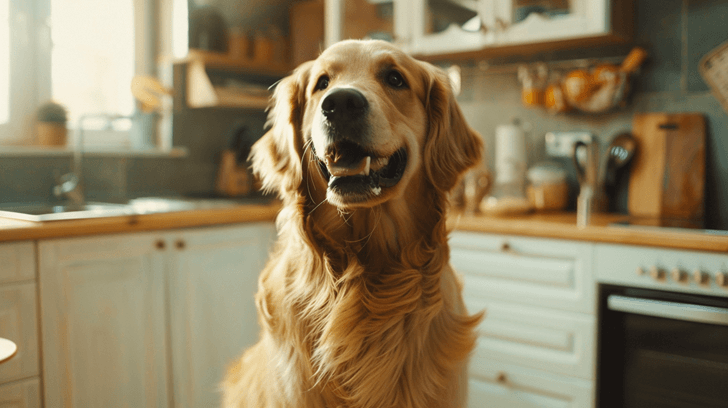
When you ensure that your dog avoids harmful foods, you are investing in their long-term health and well-being. Chronic exposure to toxic substances like garlic or onions can lead to ongoing health issues, including anemia and digestive problems. Providing your dog with a safe, balanced diet can contribute to a longer and healthier life.
4. Creating a Safer Home Environment
Knowing which foods are toxic empowers you to make your home a safer environment for your dog. This knowledge helps you organize your kitchen and pantry in a way that keeps dangerous foods out of reach. It also allows you to educate other family members about the risks, so everyone can work together to keep your dog safe.
For example, if you regularly use garlic and onions in cooking, you can ensure these ingredients are stored securely, and any leftovers are disposed of safely. Similarly, items like macadamia nuts, which may be left on countertops, should always be stored away from curious pets.
5. Strengthening the Bond with Your Dog
By proactively protecting your dog from toxic foods, you demonstrate care and responsibility. When you invest time in learning about your dog’s dietary needs and restrictions, you strengthen the bond you share. Your dog relies on you for safety, and by keeping them healthy and safe, you build trust and a deeper connection.
Common Toxic Foods for Dogs: A Detailed Guide
Understanding the dangers certain foods pose to dogs is the first step in protecting your pet. Below is a list of the most common toxic foods, the reasons why they are harmful, and the symptoms you should watch for in case of accidental ingestion.
1. Chocolate

Chocolate is one of the most well-known toxic foods for dogs, but the severity of its effects is often underestimated. Chocolate contains both theobromine and caffeine, both of which are harmful to dogs. Dark chocolate and baking chocolate are especially dangerous due to their higher concentrations of theobromine.
- Why it’s harmful: Dogs metabolize theobromine slowly, leading to a toxic buildup in their systems. Even small amounts can cause health issues.
- Symptoms: Vomiting, diarrhea, rapid breathing, increased heart rate, tremors, seizures, and in severe cases, death.
- What to do: If your dog ingests chocolate, contact your vet immediately. Inducing vomiting may be necessary if ingestion was recent. Activated charcoal may also be used to prevent further absorption of the toxin.
2. Grapes and Raisins
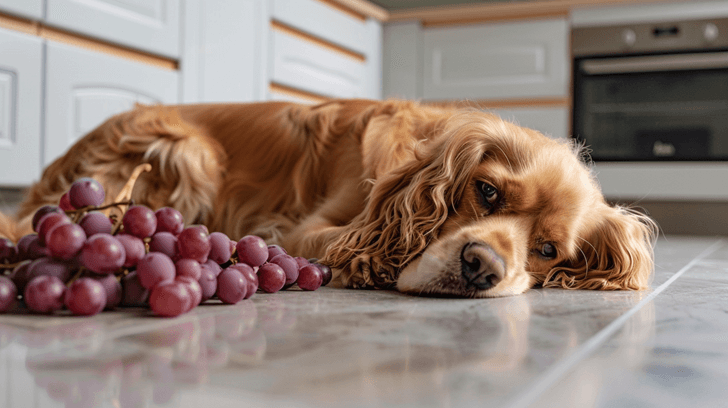
Grapes and raisins, though healthy for humans, are incredibly toxic to dogs. Even small amounts can cause sudden kidney failure. The exact substance within grapes that causes this reaction is still unknown, making them particularly dangerous.
- Why they’re harmful: Ingesting grapes or raisins can lead to severe kidney damage, which may result in renal failure.
- Symptoms: Vomiting, lethargy, loss of appetite, abdominal pain, and decreased or no urine production.
- What to do: If your dog consumes grapes or raisins, seek immediate veterinary attention. Early treatment is critical in preventing permanent kidney damage or death.
3. Onions, Garlic, and Chives
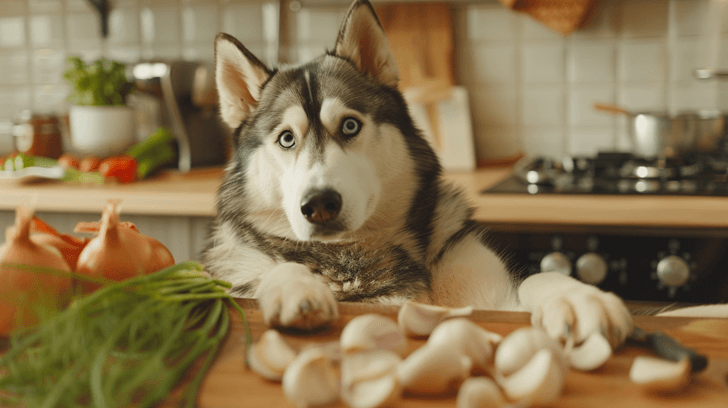
Onions, garlic, and other members of the allium family are toxic to dogs whether they are raw, cooked, or dried. These foods can cause hemolytic anemia by damaging a dog’s red blood cells, making it harder for them to carry oxygen through their body.
- Why they’re harmful: These foods contain thiosulfate, which dogs cannot digest properly. Over time, this can lead to the destruction of red blood cells and anemia.
- Symptoms: Weakness, lethargy, reddish urine, pale gums, and collapse in severe cases.
- What to do: If your dog consumes any form of onion or garlic, take them to the vet for a blood test to check for signs of anemia.
4. Xylitol
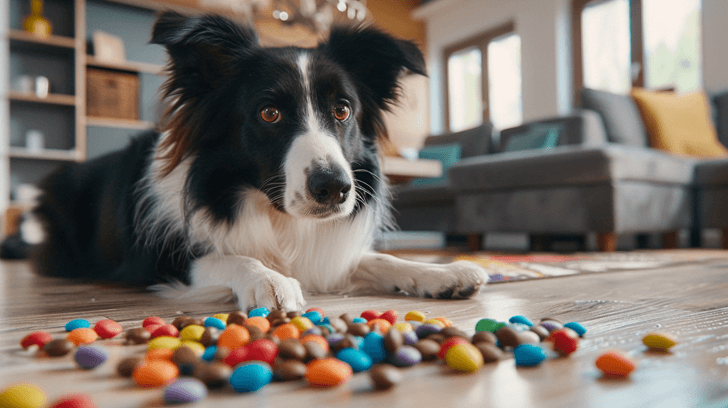
Xylitol is a sugar substitute found in sugar-free gum, candies, baked goods, and even some peanut butters. It is highly toxic to dogs and can cause a rapid release of insulin, leading to hypoglycemia (low blood sugar). In severe cases, it can result in liver failure.
- Why it’s harmful: Xylitol causes a dog’s pancreas to release an excessive amount of insulin, which lowers blood sugar levels to dangerous levels.
- Symptoms: Vomiting, weakness, lack of coordination, seizures, and in severe cases, liver failure.
- What to do: If you suspect your dog has ingested xylitol, seek immediate veterinary care. Hypoglycemia can occur within 10-30 minutes of ingestion, so prompt treatment is crucial.
5. Macadamia Nuts
Macadamia nuts are highly toxic to dogs, though the exact substance responsible for this toxicity is unknown. Even a small amount can cause serious health issues.
- Why they’re harmful: Macadamia nuts can cause a range of symptoms, including muscle tremors, weakness, and hyperthermia (elevated body temperature).
- Symptoms: Vomiting, tremors, weakness, increased body temperature, and inability to walk.
- What to do: Contact your vet immediately if your dog ingests macadamia nuts. Supportive care, including IV fluids and medications, may be necessary to manage symptoms.
6. Avocados
While avocados are packed with healthy fats and nutrients for humans, they can be dangerous for dogs. The flesh, skin, and pit contain a substance called persin, which can be toxic to dogs in large quantities.
- Why they’re harmful: Persin can cause vomiting, diarrhea, and in more severe cases, fluid accumulation in the heart or lungs.
- Symptoms: Vomiting, diarrhea, difficulty breathing, and abdominal discomfort.
- What to do: Keep avocados away from your dog, especially the pit, which can also pose a choking hazard. If ingestion occurs, seek veterinary attention.
What to Do If Your Dog Eats Something Toxic: Step-by-Step Guide
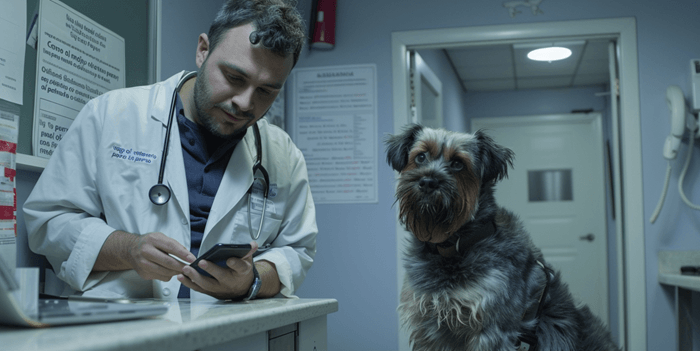
- Identify the Food and Quantity Consumed The first step is to determine what your dog ate and how much. This information will help your veterinarian assess the level of risk. For example, a small piece of milk chocolate is less dangerous than dark chocolate, and the amount ingested is critical in determining the next steps.
- Call Your Veterinarian Immediately contact your vet or an emergency animal clinic for advice. Even if your dog seems fine, some toxins take time to affect the body. For instance, grape or raisin toxicity may not show symptoms right away, but the effects on the kidneys can be devastating.
- Induce Vomiting (If Advised by a Vet) In some cases, your vet may advise you to induce vomiting, especially if the ingestion happened within the last two hours. Never induce vomiting without veterinary guidance, as some toxins, like caustic substances, can do more harm if vomited back up.
- Activated Charcoal Your vet may administer activated charcoal to prevent further absorption of the toxin in your dog’s system. This is typically used for substances like chocolate or xylitol.
- Monitor Your Dog for Symptoms Watch for any signs of distress, such as vomiting, diarrhea, lethargy, or difficulty breathing. Even if your dog appears fine at first, symptoms can develop over time, so continuous monitoring is crucial.
- Get Emergency Treatment If your dog’s condition worsens or symptoms become severe, immediate veterinary care is required. Time is of the essence in preventing long-term damage or death from toxic food ingestion.
Conclusion
Understanding the dangers of toxic foods for dogs is essential for every responsible pet owner. By keeping harmful foods out of reach and educating yourself on what to do in case of accidental ingestion, you can protect your dog from serious health issues.
Remember, prevention is the best strategy. Organize your kitchen, educate family members, and ensure that your dog is only given foods that are safe and healthy for them.
Want more expert tips on dog care, training, and nutrition? Don’t forget to check out the «Dog Trainer Bible» — the ultimate guide to raising a happy and healthy dog! Get your copy today and become the best pet parent you can be.
